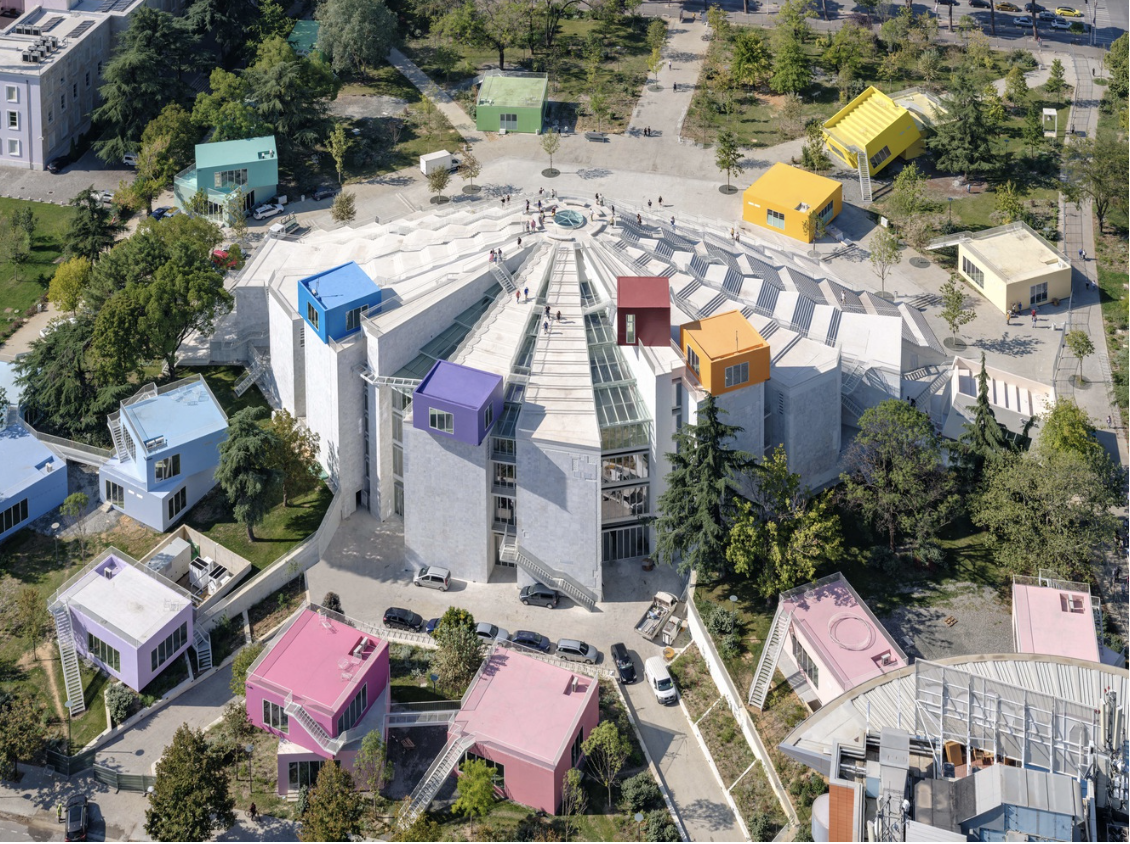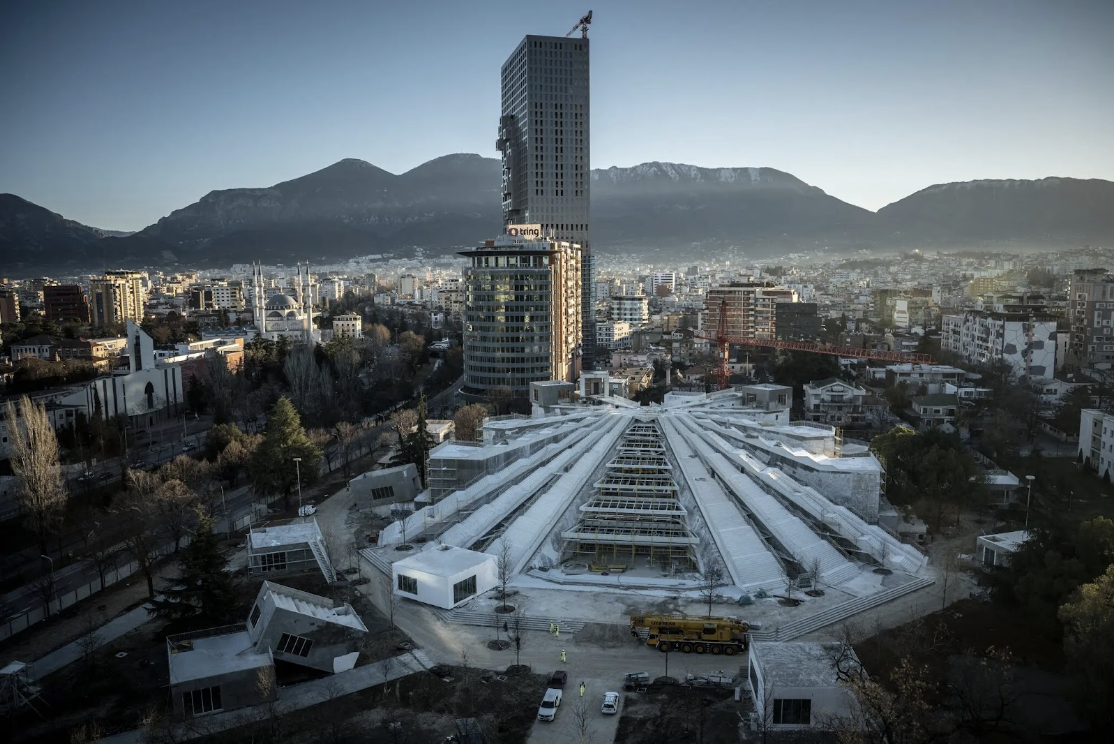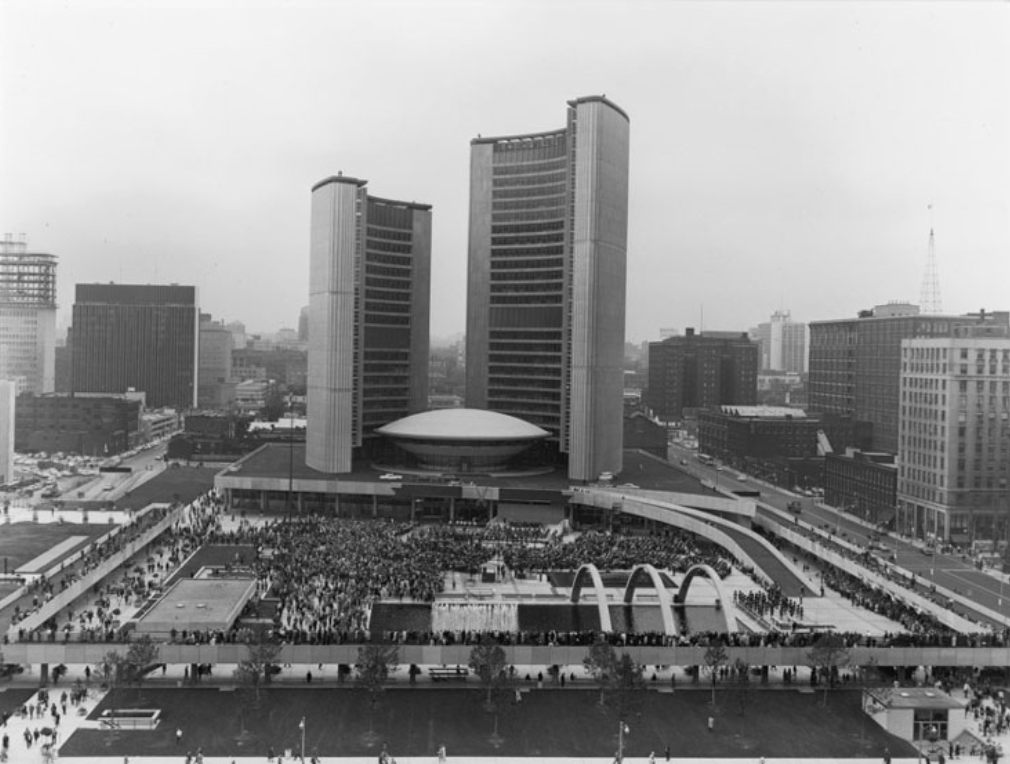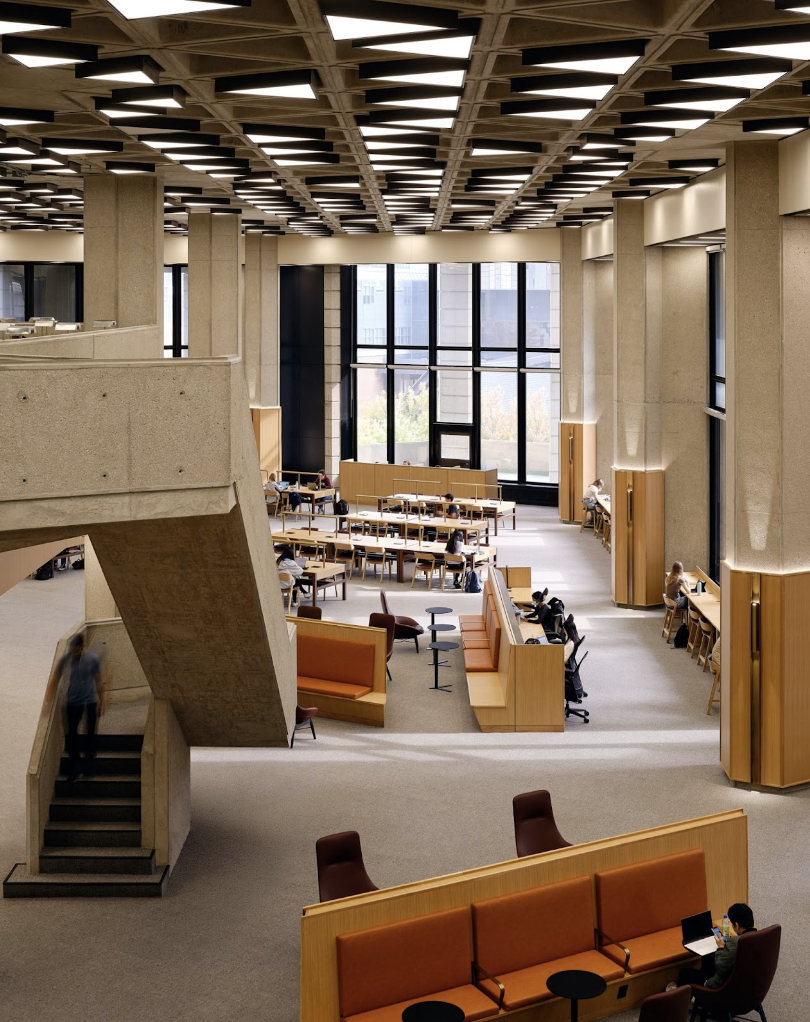Refashioning Brutalist Architecture
Brutalism, known for its cold concrete feel with hard edges, is being revived in colour. As styles and spaces change, buildings like the Pyramid of Tirana in Albania are adapting to the times, transforming into colourful hubs for communities to grow with.
Originally a grey concrete structure built in the 1980s, the Pyramid of Tirana was redesigned by architecture studio MVRDV and re-opened to the public earlier this year in May. Once a symbol of the communist state, the pyramid’s architecture was elevated (literally) with stairs for public access and bold coloured box structures added to the pyramid landmark.

Redesigned Pyramid of Tirana by architects MVRDV
The Pyramid of Tirana
The efforts behind redesigning the Pyramid of Tirana represent the desire for change with the shifting of social and cultural norms. By adding blocks of colour to the concrete structure, the space welcomes youth into the space, inviting fresh ideas and community gatherings to promote future growth.
These colours and shapes have transformed the environment while preserving the historical foundations of the pyramid. The colours, reflective of the rainbow colour spectrum, are a constant reminder of how people can build on old ideas and ways of life, modernizing architecture while keeping brutalism alive.

Pyramid of Tirana before MVRDV renovations
Behind Brutalist design
Before it flourished into an urban community space, the pyramid was a museum dedicated to the country’s late communist dictator Enver Hoxha. Under his leadership, commonly used items like typewriters and coloured TVs were banned, giving today’s coloured architectural additions even more significance to Albania’s societal change.
The original building was originally opened in 1988, and later used for corporate functions like a conference centre and broadcast building. Today, its redesign represents a cultural shift to openness and expression, leaving us to wonder if brutalism lacked those qualities or simply offered different ones.
The shift away from communism in the ‘90s may have sparked the pyramid’s architectural change, but brutalism has always suited various social and cultural conditions while making a controversial mark on the design world.
Take, for example, brutalist design in Toronto. Visible in areas like City Hall, the John P. Robarts Research Library and the Allan Brown Building, the use of concrete patterns and sleek structures were used to display functionality. With a growing population and contemporary thought, Toronto took architectural inspiration from Europe and its areas of sturdy development.

Opening ceremonies for New City Hall and Square, September 1965
Giant concrete columns and arcs are a staple in Toronto’s brutalist architecture, which arrived on the scene in the 1950s. Its blocky, monolithic essence remains today, though it hasn’t been as popular since the rise of modernist movements and the investment of mass concrete.
Today, it offers a foundation for new ideas and reimagined environments to flourish. With its heavy-looking materials and simplistic use of lines and odd shapes, brutalism represented functionality and the future. Thus, building on that functionality gives the future a fresh new look.

Robarts Library Reading Room, 2022
The modern architecture spin
Wood, glass and added colour are some of the elements defining the refashioning of brutalist architecture worldwide today. The brutalist concrete Robarts Library Reading Room was built in 1973, but received interior refashionings by architecture group Superkül in 2022. The renovations were done to enhance the contemporary student experience and learning environment.
Breathing life into Brutalism
Brutalist architecture was born as a response to post-World War II ideals of strength, functionality, and social homogeneity. The movement embodies the ideology of the time, that materiality should be viewed in the purist sense, with form following function. While today, many find brutalist architecture unsightly compared to post-modern design, many brutalist buildings, such as The Barbican in London, are still admired.
The form of many of these bold, concrete buildings may fail to resonate in today’s society, particularly when function is seen as an afterthought, the redesign of buildings like the Pyramid of Tirana and the Robarts Library Reading Room proves the movement can be appreciated, while reinvented for a contemporary audience when required.
Enjoyed reading about brutalist design? Step inside Habitat 67.






